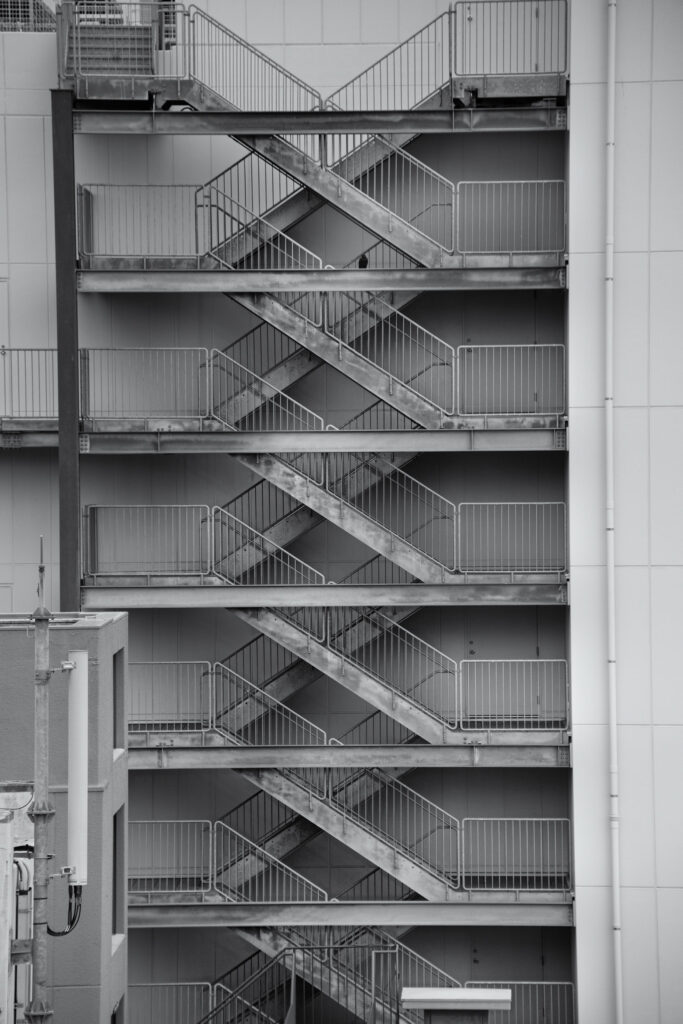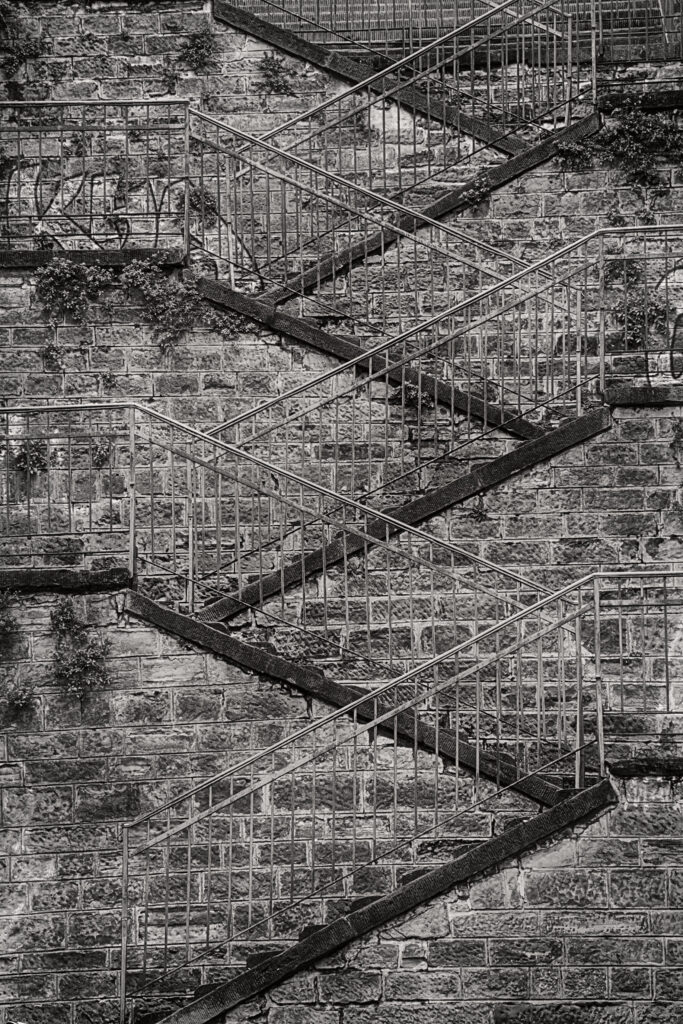Understanding design patterns is a crucial part of construction of almost anything from buildings to object-oriented software. Visual design patterns originally derived from architecture, and are bedrock to composition; both in terms of replication and repetition within an image, and in using pattern recognition as an effective method for recognizing compositional organization across a universe of captures.

As a devotee of design-pattern gazing, I am particularly drawn to stairs. Stairs can definitely pull me down the rabbit hole!
As architecture, they hark back to the intuitive roots of design-pattern theory. Function is involved as well as form—we use stairs to ascend and descend, to state the obvious—although some stairs get quite fanciful, with spirals within spirals, and so forth.
One stair patterns that calls to me is the “criss-cross.” The criss-cross has an element of practicality: it can reach more landings in a relatively compact space. However, at times the crossings are ornamental because both stairs rise to the same plateaus.
I find criss-cross stair examples almost everywhere in the world. The criss-cross back stairs of an office building, shown above, were photographed in Hiroshima, Japan. The criss-cross public lower stairs, shown below, are at the end of a small street in Trieste, Italy.
